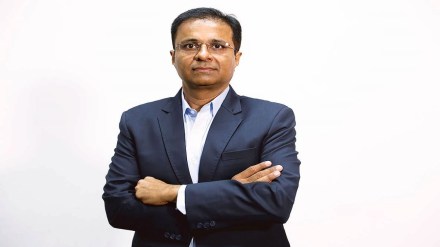Early-stage venture capital firm BLinC Invest started its operations in 2015, investing in four companies – 1crowd, Imarticus, Genext Students, and Eduvanz – with an average investment of `5 crore that gave 4.5X returns. It registered successful exits from 1crowd through a secondary transaction and from Eduvanz through stake sale to large VC firms such as Sequoia and Unitus Capital. Last year, BlinC introduced its SEBI-registered BlinC Fund II with a fund size of `100 crore, which invested in insurtech startup Vital, leading its series A round. With eight successful business establishments, investments of over `300 crore in 25 firms, and eight successful exits, Amit Ratanpal, founder & MD, BLinC Invest, speaks to Banasree Purkayastha on how the company chooses its investees, the sectors that excite it, and more. Excerpts:
Have you closed your new fund? What is the average size of investment you are looking at from the fund?
We are currently in the process of closing BLinC Fund II. We’ve received commitments from various categories of investors – HNIs, family offices, corporates, and institutional investors – and are confident of achieving our target of `100 crore in the next few days. We’ve already made an investment in Vital and are evaluating multiple opportunities for our next investment.
We prefer investing in companies which are at pre-series A or series-A stage. Consequently, we look to put Rs 10-20 crore into any investee company.
What are the niche segments that excite you? Any new deals that you are closing?
We focus on two sectors – education and financial services, which together contribute about 10% to the GDP of India. These two sectors are the key pillars of any economy and have also been one of the most resilient sectors through the pandemic. Our team has deep industry knowledge and expertise with a blend of investment management and operational experience in these sectors, which we leverage to support our portfolio companies. We are closely evaluating multiple investment opportunities across digital lending, supply chain financing, early childhood education, upskilling, higher education, etc.
How does BLinC go about identifying startups it wants to invest in?
In today’s world, a lot of startups operate with a high-burn high-growth strategy without focussing on profitability. However, growth does not always lead to profitability. I believe the startup that has identified a whitespace and manages to grow significantly well while focussing on cash flow and profitability is going to be a winner. We like investing in companies where the product is ready, the team is in place with all key positions, and there is `1-2 crore of revenue, indicating the acceptability of the product in the market.
What exactly differentiates one VC from the next? Does this make a difference to startups?
Venture capitalists play a critical role in the growth of startups, especially the ones at an early stage. They can support the startups in multiple areas like industry insights, operational expertise, mentorship, network support, business development, etc. These attributes also differentiate one VC from another, so startup entrepreneurs need to be very careful to get the right kind of VCs on their cap table. For example, BLinC has supported its portfolio companies in various forms across all business areas – acting as CFO, hiring key management team, introductions to key partners, new product development, etc.
The last one year has seen a spate of IPOs by tech startups, ensuring successful exits for promoters/VCs. Is it a much rosier world for VCs now?
The year 2021 has been phenomenal for startups as well as for investors, as India saw over 42 unicorns emerging and multiple companies getting listed. Exits, especially through IPOs, are a great sign of success for both the entrepreneurs and the investors. IPO exits also generate a good amount of liquidity for the investors, who can invest further in other startups in the ecosystem, thereby improving the liquidity in the market. This phenomenon is only going to gain momentum over the coming years. The increasing number of IPOs also serves to indicate the maturity of the investors in the market, especially with regard to the acceptance of new-age business models that are yet to turn profitable.
Read Also: UGC to announce guidelines for dual-degree programmes across higher education institutions
